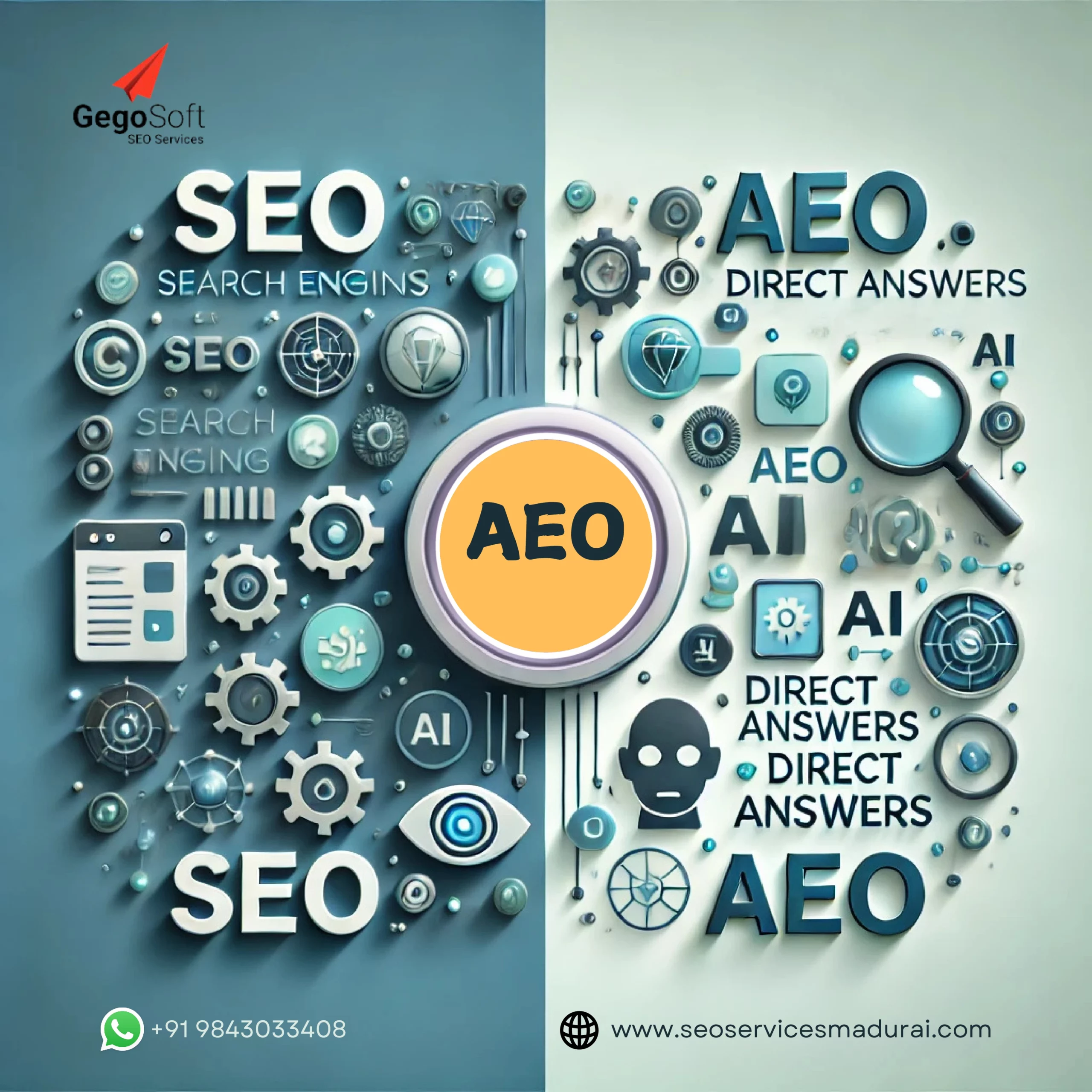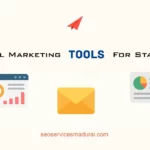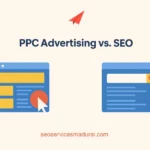The debate between SEO and the newer concept of Answer Engine Optimization (AEO) has gained momentum as technology advances in the world of search. While SEO has long been the foundation of online content discovery, AEO is emerging as a contender in enhancing user experience. In this article, we’ll dive deep into both concepts, comparing how each works, their impact on content strategy, and how businesses might need to adapt.
What is the Difference Between AEO and SEO?
| Aspect | Answer Engine Optimization (AEO) | Search Engine Optimization (SEO) |
|---|---|---|
| Primary Goal | Provides direct answers to user queries, often through voice search or snippets | Improves a website’s ranking on search engine results pages (SERPs) to attract organic traffic |
| User Intent | Focuses on question-based and conversational queries | Covers a broader range of keywords and search intent |
| Content Structure | Concise, direct, answer-focused content | Detailed and often long-form content targeting multiple keyword variations |
| Primary Users | Voice search users, mobile users seeking quick answers | Desktop and mobile users conducting in-depth r research |
| Optimization Techniques | Structured data, FAQ sections, natural language for voice search | Keywords, meta tags, backlinks, and on-page SEO |
| Tools & Technology | Relies on structured data, schema markup, voice search tools | SEO tools (e.g., Google Analytics, SEMrush, Ahrefs) |
| User Experience | Designed to minimize clicks by providing answers within search results | Aims to drive traffic to websites where users find detailed information |
| Content Type | FAQ, short Q&A, and snippet-friendly content | Blogs, articles, product pages, and in-depth guides |
| Audience Engagement | Provides fast answers, useful for on-the- go queries | Engages users through detailed content and page interactions |
| Visibility in Search | Targets featured snippets and answer boxes | Focuses on ranking across different SERP positions |
| Best for | Industries where quick answers are vital (e.g., healthcare, customer support) | Broad industries, especially those that benefit from in-depth content |
| Content Creation Focus | Directly addressing common questions and answers | In-depth research, storytelling, and comprehensive content |
| Future Relevance | Growing rapidly due to increased voice search | Essential but evolving with new search technologies |
| Impact on Digital Marketing | Emphasizes a quick-response strategy | Focuses on long-term traffic and brand authority |
Understanding Search Engine Optimization (SEO): Past, Present, and Future
SEO has been essential to online visibility since the early days of the internet. SEO is a set of strategies designed to help content rank higher on search engines, typically by targeting keywords, optimizing metadata, and enhancing website speed and usability. Today, SEO encompasses everything from on-page elements (like keywords and tags) to off-page strategies (such as backlinks) to help attract organic traffic.
Introduction to Answer Engine Optimization (AEO): The Evolution of AEO
Answer Engine Optimization (AEO), represents a shift in focus from providing a list of relevant web pages to delivering direct, concise answers to user queries. Popularized by the rise of smart assistants like Siri, Alexa, and Google Assistant, AEO seeks to answer questions quickly, often without the user needing to visit a website. This technology is changing how information is processed, placing emphasis on structured data, FAQ-style content, and voice-search compatibility.
How Does SEO Work?
SEO relies on understanding user search intent and structuring content to match keywords and search phrases. Core components of SEO include:
- Keyword Research: Identifying keywords and phrases that users commonly search.
- On-Page Optimization: Using keywords, headers, tags, and images to make pages more accessible to search engines.
- Backlinking: Establishing authority by obtaining quality links from reputable sites.
- Technical SEO: Ensuring the website is optimized for speed, mobile-friendliness, and proper indexing.
These elements come together to create web pages that rank higher, aiming to attract organic traffic.
How Does AEO Work?
AEO operates on the principle of providing the “one best answer” to user questions. By focusing on direct, accurate answers, AEO leverages structured data and context to meet user intent. Elements that enhance AEO include:
- Structured Data Markup: Enhances content visibility by signaling the type of information to search engines.
- Voice Search Optimization: Focusing on natural, conversational language to align with voice queries.
- FAQ Content and Snippets: Providing clear, concise answers that can appear in featured snippets on search engines.
With AEO, the goal is not just visibility but positioning as a trusted, direct source of answers.
AEO vs. SEO: Key Differences
The primary distinction between SEO and AEO lies in the end goal. While SEO prioritizes ranking on the SERPs, AEO focuses on delivering answers instantly. This divergence creates several differences in approach:
- Search Intent in SEO vs. AEO: SEO focuses on a broad spectrum of keywords, whereas AEO zeroes in on questions users want answered directly.
- Content Structure for SEO vs. AEO: SEO content is often longer and more in-depth to capture keyword variations, whereas AEO content is concise and direct, aiming for snippets and answer boxes.
- User Experience in SEO vs. AEO: SEO aims to bring users to a website for answers, while AEO aims to provide the answer within the search results, reducing the need for additional clicks.
Best Practices for SEO Optimization
To maximize SEO, consider the following best practices:
- Conduct Keyword Research: Use tools to identify high-volume keywords.
- Optimize Meta Tags and Descriptions: Include target keywords to help improve click-through rates.
- Produce Quality Content: Write comprehensive, valuable content that provides in-depth insights.
- Prioritize Technical SEO: Improve page speed, mobile responsiveness, and secure (HTTPS) connections.
- Build Quality Backlinks: Establish credibility through reputable external links.
Best Practices for AEO Optimization
Optimizing for AEO requires a different approach, focusing more on user intent and structured answers:
- Implement Structured Data: Use schema markup to help search engines understand content.
- Use Natural Language: Write in a conversational tone that aligns with how people speak, which is especially important for voice search.
- Optimize for Snippets: Focus on creating content that answers questions concisely, suitable for Google’s featured snippets.
- Create FAQ Sections: These are helpful for voice search and can improve visibility in SERPs.
- Enhance Local Search Results: AEO benefits from local relevance, particularly with voice search.
Creating AEO-Ready Content: Practical Steps
Developing AEO-optimized content involves creating specific types of answers and structures. To make your content AEO-friendly:
- Focus on Question-Based Keywords: Research and answer common questions directly in your content.
- Use Schema Markup for Content Types: Structured data tags like FAQs, products, and reviews help search engines identify the content’s purpose.
- Develop Conversational Content: Use natural, straightforward language to improve relevance for voice search.
Tools and Technology Powering SEO
SEO relies on various tools to enhance keyword strategy, technical aspects, and link-building:
- Google Analytics and Google Search Console: Track traffic, keyword performance, and website health.
- Ubersuggest and SEMrush: Help with keyword research and competitor analysis.
- Ahrefs and Moz: Great for backlink analysis and improving site authority.
AEO-Specific Tools and Technologies
AEO requires specialized tools for data structuring and voice-search compatibility:
- Google Schema Markup Testing Tool: Verifies structured data markup.
- Answer The Public: Assists in finding question-based keywords.
- Dialogflow: Develops conversational interfaces for voice applications.
The Impact of AEO and SEO on Businesses
Both SEO and AEO offer significant advantages for businesses. While SEO can drive consistent website traffic and support long-term growth, AEO helps businesses capture users’ attention quickly. For industries where users want quick answers—like healthcare or tech support—AEO can improve user satisfaction and drive brand credibility.
How AEO is Transforming Digital Marketing
AEO is reshaping digital marketing by prioritizing direct, user-centric answers. For marketers, AEO requires an understanding of user questions and content structuring that ensures visibility. This shift represents a significant change, urging businesses to balance SEO tactics with AEO-ready content.
The Future of SEO in an AEO-Dominated World
As AEO continues to grow, the future of SEO may involve a hybrid approach, blending traditional SEO with AEO strategies. Marketers may increasingly focus on voice search and FAQs to adapt to the changing landscape.
Adapting to the AEO Shift: What Marketers Need to Know
Marketers must stay updated with AEO trends and tools. Building skills in data structuring, conversational tone, and snippet optimization will be key as AEO becomes more prevalent. Combining SEO fundamentals with AEO will enable a well-rounded content strategy that caters to both engines and users.
Is AEO the Next Big Thing? Final Thoughts
While SEO remains essential, AEO is likely to become a crucial part of digital marketing. As users expect faster and more accurate answers, brands that adopt AEO practices will stand out in search results. For now, AEO complements SEO, but in the near future, it might shape the direction of online search.
FAQs
1. What is Answer Engine Optimization (AEO) in digital marketing?
Answer Engine Optimization (AEO) focuses on providing direct answers to user questions, especially in response to voice searches.
2. How does AEO differ from SEO?
While SEO aims to improve website rankings on search engine results pages, AEO strives to deliver quick answers directly within the search results.
3. Why is AEO becoming popular?
With the rise of voice search, AEO is increasingly popular as it prioritizes concise, question-based answers, which users prefer for fast information retrieval.
4. Do I need both SEO and AEO for my business?
Yes, both strategies are valuable. SEO can drive organic traffic, while AEO enhances visibility for voice searches and quick answers.
5. How can I optimize for AEO?
Use structured data, write conversationally, and include FAQ sections in your content to enhance visibility in answer engines.
6. What industries benefit most from AEO?
Industries like healthcare, finance, and tech support, where quick, reliable answers are vital, can benefit greatly from AEO.











